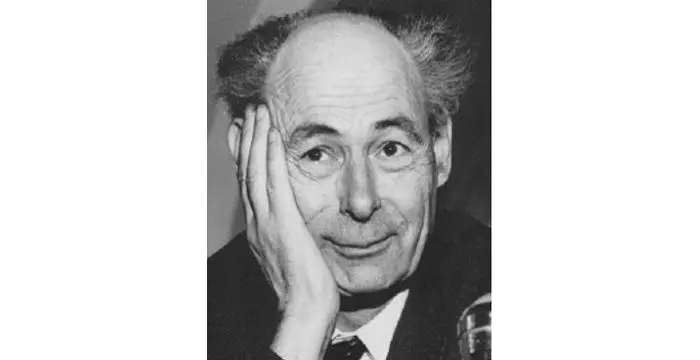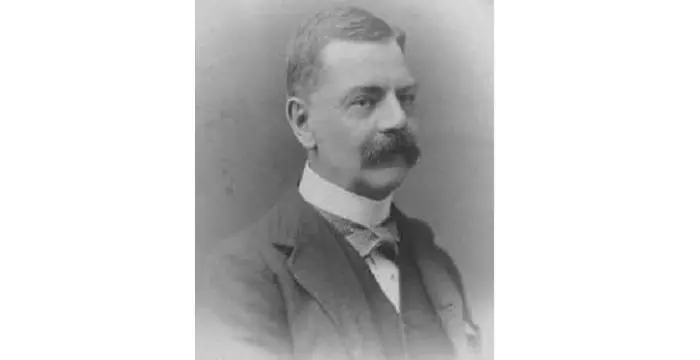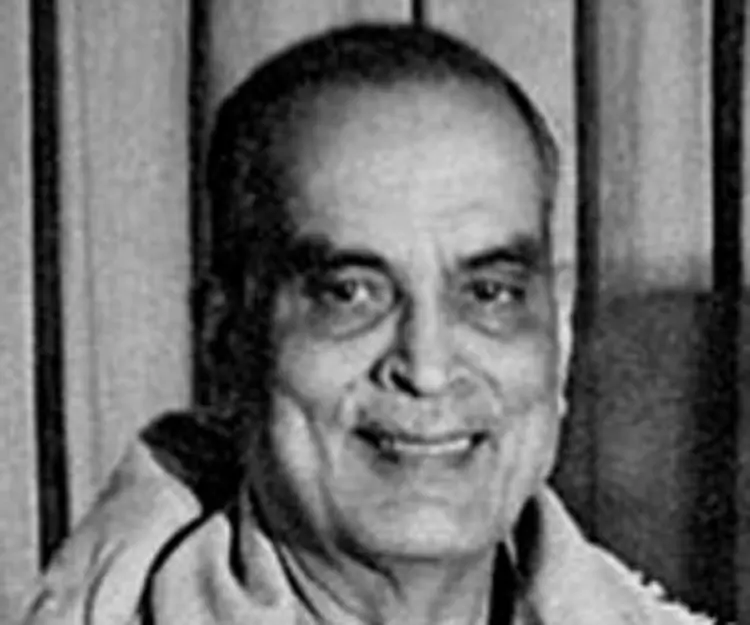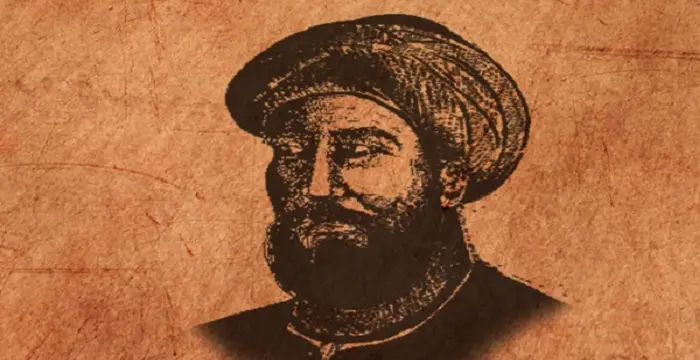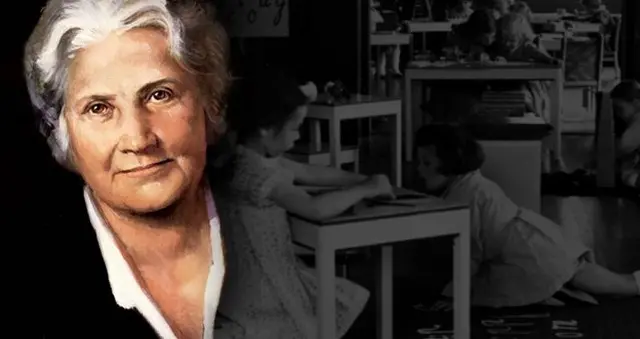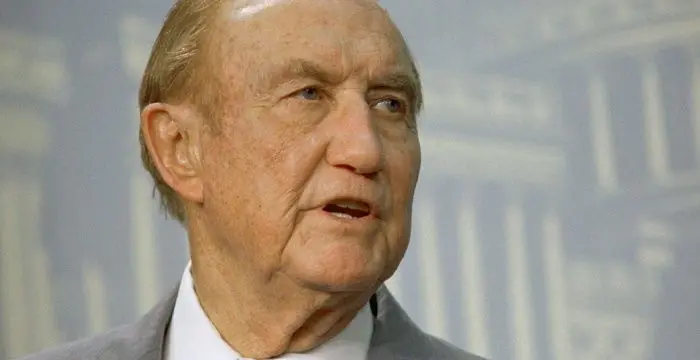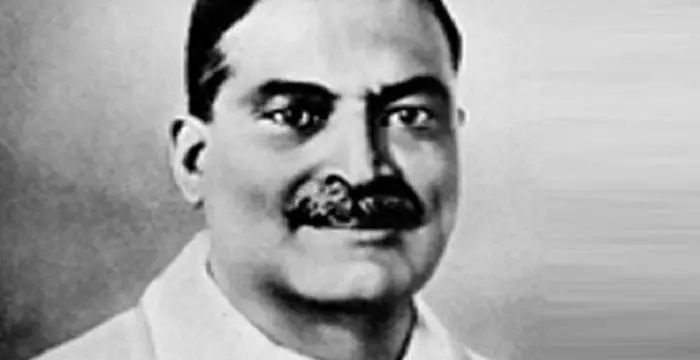
Bidhan Chandra Roy - Physicians, Timeline and Facts
Bidhan Chandra Roy's Personal Details
Dr
| Information | Detail |
|---|---|
| Birthday | July 1, 1882 |
| Died on | July 1, 1962 |
| Nationality | Indian |
| Famous | Leaders, Political Leaders, Physicians, General Practitioners |
| Birth Place | Bankipore |
| Gender | Male |
| Sun Sign | Cancer |
| Born in | Bankipore |
| Famous as | Political Leader, Physician |
| Died at Age | 80 |
// Famous General Practitioners
Paul Tournier
Paul Tournier was a Swiss physician and author; he is regarded as the twentieth century's most famous Christian physician. Check out this biography to know about his childhood, life, achievements, works & timeline.
Willem Einthoven
Willem Einthoven was a renowned Dutch physiologist who received the Nobel Prize in Medicine in 1924 for inventing the first practical electrocardiogram. Check out this biography to know about his childhood, life, achievements, works & timeline.
Upendranath Brahmachari
Upendranath Brahmachari was a renowned Indian scientist and a prominent medical practitioner of his era. This biography of Upendranath Brahmachari provides detailed information about his childhood, life, achievements, works & timeline
Bidhan Chandra Roy's photo
Who is Bidhan Chandra Roy?
Dr. Bidhan Chandra Roy was an eminent Indian freedom fighter and the second Chief Minister of West Bengal. Considered as the Maker of Modern West Bengal, he founded five eminent cities, Durgapur, Kalyani, Bidhannagar, Ashokenagar, and Habra. A former student of the Calcutta Medical College, he completed both his F.R.C.S. and M.R.C.P. degrees in a little over two years, in England. On his return to India, he joined as a faculty member of Calcutta Medical College. He went on to establish several prominent medical institutions in Calcutta. A member of Brahmo Samaj, he later entered politics and was elected to the Bengal Legislative Council and the All India Congress Committee. He led the Civil disobedience movement in Bengal and was later elected as Mayor of Calcutta Corporation. He played a prominent role in the selection of the National Anthem. On Gandhi's insistence, he accepted the Chief Minister position of West Bengal and took office in 1948. Within three years, he restored law and order in chaotic Bengal. The Government of India honoured him with the Bharat Ratna in 1961. In spite of being an active politician, he was principally a physician. National Doctor's Day is celebrated every year on 1st July on his birthday.
// Famous Leaders
Edi Rama
Edi Rama is the current Prime Minister of Albania. Check out this biography to know about his childhood, life, achievements, works & timeline.
Tecumseh
Tecumseh was a Native American leader of the Shawnee clan. This biography profiles his childhood, life and timeline.
Khalifa bin Zayed Al Nahyan
Sheikh Khalifa bin Zayed Al Nahyan is the current President of the United Arab Emirates (UAE). Check out this biography to know about his birthday, childhood, family life, achievements and fun facts about him.
Childhood & Early Life
Bidhan Chandra Roy was born on 1 July 1882, in Patna, Bihar, to Prakash Chandra Roy, an excise inspector, and Aghorkamini Devi. He was the youngest child of the family and had four elder siblings.
Growing up, his mother passed away when he was only 14 years old. His father had to stay outdoors most of the time because of his work, hence, the five siblings divided amongst themselves the responsibilities of domestic work.
In 1897, he passed matriculation examination from Patna Collegiate School. Later, he completed his I.A. from Presidency College, Calcutta and B.A. Honours in Mathematics from Patna College.
He got through the admission of both Calcutta Medical College and Bengal Engineering College. Nevertheless, he chose medicine over engineering and moved to Calcutta in 1901 to study at the Calcutta Medical College.
After the first year of medical college, he faced acute shortage of funds as his father retired from his job. To salvage the situation, young Roy earned a scholarship and lived parsimoniously to manage his finances better.
In 1905, when partition of Bengal was announced he was still in college. He wanted to join the nationalist movement but decided to serve his nation better by completing his studies first and qualifying as a doctor.
Career
After graduation, Dr. Bidhan Chandra Roy joined the Provincial Health Service and worked hard as a doctor. He also served patients as a nurse when required. In his free time, he practised privately, charging a nominal fee.
In 1909, he left for England with a desire to pursue higher medical studies at St. Bartholomew's Hospital in London. However, the Dean rejected his application as he was an Asian. Unwilling to give up easily, he re-submitted his application 30 more times before being finally accepted into the college.
Competent as he was, in a little over two years he completed both his M.R.C.P. and F.R.C.S. degrees, an extraordinary accomplishment. He returned to India in 1911 and began teaching at the Calcutta Medical College, and later at the Campbell Medical School, and the Carmichael Medical College.
During this period, he strongly promoted health among the common people. He contributed significantly to medical education and established several specialised hospitals and health centres.
One of the most significant medical centres he established was the Chittaranjan Seva Sadan (estd. 1926) for women and children. Initially, the women were reluctant to visit the hospital but he worked hard to help them overcome their inhibitions successfully. Later, he also opened a centre for training women in nursing and social work.
He entered politics in 1925. He contested elections from the Barrackpore Constituency for the Bengal Legislative Council and defeated his popular opponent, the ‘Grand Old Man of Bengal’ Surendranath Banerjee.
In 1928, he played a key role in starting the Indian Medical Association. He served the association in various roles including as national president for two terms. Also in the same year, he was elected to the All India Congress Committee.
In 1929, he led the Civil Disobedience Movement in Bengal and the following year, he convinced Pandit Motilal Nehru to nominate him a member of the Congress Working Committee (CWC).
Before long, the CWC was declared an unlawful body by the British Government and as a result, he along with many other members of the committee was arrested on 26 August 1930. They were kept in custody at the Central Alipore Jail in Calcutta.
He served as the Alderman of the Calcutta Corporation from 1930–31 and as Mayor in 1933. Under him, the Corporation made rapid progress in the fields of education, medical facilities, and infrastructure. He set up a framework to provide grant in aids to hospitals and charitable dispensaries.
He created the Medical Council of India and became its first president in 1939. He held the position till 1945.
He was a friend and doctor to Mahatma Gandhi. In 1942, when Gandhi was fasting in Pune for the Quit India Movement, Dr. Roy attended to him and convinced him to take medicines which were not made in India.
In 1942, he was elected as the Vice Chancellor of the University of Calcutta. Around this time, Calcutta was under the threat of Japanese insurgency. Since he believed that education could help the youth serve their country better, he arranged air-raid shelters and relief for students and their teachers, so that classes could be held even during war.
After India’s independence, the Congress Party proposed his name for Chief Ministership of West Bengal. However, since he was more dedicated to his medical profession, he did not want to assume office. On Gandhi's insistence, he accepted the position in January 1948.
Bengal at that time was plagued by communal violence, shortage of food, unemployment and a large flow of refugees from East Pakistan. Within three years, his governance restored Bengal’s law, order and lost glory. In total, his 14 year stint as Chief Minister of West Bengal was immensely successful.
Major Works
He made quality health services available to common people. He established some leading medical institutions in Calcutta like the R.G. Kar Medical College, the Jadavpur T.B. Hospital, Chittaranjan Seva Sadan, Kamala Nehru Hospital, Victoria Institution, and Chittaranjan Cancer Hospital.
He played a key role in establishing the Indian Institute of Mental Health, the Infectious Disease Hospital, and the first-ever postgraduate medical college in Calcutta.
In 1925, he tabled a resolution to study the causes, effects and prevention of pollution in Hooghly.
As Mayor of Calcutta Corporation, he promoted free education, free medical aid, better roads, improved lighting, and water supply.
Later, as Chief Minister of West Bengal, he restored law and order in the state. He laid the foundation five eminent cities, namely, Durgapur, Kalyani, Bidhannagar, Ashokenagar, and Habra
Awards & Achievements
In 1935, he was elected Fellow of Royal Society of Tropical Medicine and Hygiene and later in 1940, Fellow of American Society of Chest Physicians. He was also elected President of Medical Council of India in 1944.
In recognition of his efforts in helping students continue their education during the Japanese insurgency of Calcutta, the Doctorate of Science degree was conferred upon him in 1944.
The Government of India honoured him with the Bharat Ratna, India.s highest civilian award, on 4 February 1961.
Personal Life & Legacy
Dr. Bidhan Chandra Roy didn’t marry. He died on his 80th birthday, which is 1 July, 1962, shortly after he had treated patients in the early hours of the morning and gone through the political matters of West Bengal.
He donated his house for functioning as a nursing home named after his mother, Aghorkamini Devi.
The B.C. Roy National Award was instituted in 1976 for work in the area of medicine, politics, science, philosophy, literature and arts.
// Famous Physicians
Al-Zahrawi
Al-Zahrawi, was an illustrious medieval Arab Muslim physician and surgeon. Check out this biography to know about his childhood, family life, achievements and interesting facts about him.
Jabir Ibn Hayyan
Jabir Ibn Hayyan was a medieval era polymath. Check out this biography to know about his life, works and achievements.
Maria Montessori
Maria Montessori was a physician and educator who developed the approach of Montessori education. This biography of Maria Montessori provides detailed information about her childhood, life, achievements, works & timeline.
Bidhan Chandra Roy's awards
| Year | Name | Award |
|---|---|---|
Other | ||
| 0 | Bharat Ratna | |
Bidhan Chandra Roy biography timelines
- // 1st Jul 1882Bidhan Chandra Roy was born on 1 July 1882, in Patna, Bihar, to Prakash Chandra Roy, an excise inspector, and Aghorkamini Devi. He was the youngest child of the family and had four elder siblings.
- // 1897In 1897, he passed matriculation examination from Patna Collegiate School. Later, he completed his I.A. from Presidency College, Calcutta and B.A. Honours in Mathematics from Patna College.
- // 1901He got through the admission of both Calcutta Medical College and Bengal Engineering College. Nevertheless, he chose medicine over engineering and moved to Calcutta in 1901 to study at the Calcutta Medical College.
- // 1905In 1905, when partition of Bengal was announced he was still in college. He wanted to join the nationalist movement but decided to serve his nation better by completing his studies first and qualifying as a doctor.
- // 1909In 1909, he left for England with a desire to pursue higher medical studies at St. Bartholomew's Hospital in London. However, the Dean rejected his application as he was an Asian. Unwilling to give up easily, he re-submitted his application 30 more times before being finally accepted into the college.
- // 1911Competent as he was, in a little over two years he completed both his M.R.C.P. and F.R.C.S. degrees, an extraordinary accomplishment. He returned to India in 1911 and began teaching at the Calcutta Medical College, and later at the Campbell Medical School, and the Carmichael Medical College.
- // 1925He entered politics in 1925. He contested elections from the Barrackpore Constituency for the Bengal Legislative Council and defeated his popular opponent, the ‘Grand Old Man of Bengal’ Surendranath Banerjee.
- // 1925In 1925, he tabled a resolution to study the causes, effects and prevention of pollution in Hooghly.
- // 1926One of the most significant medical centres he established was the Chittaranjan Seva Sadan (estd. 1926) for women and children. Initially, the women were reluctant to visit the hospital but he worked hard to help them overcome their inhibitions successfully. Later, he also opened a centre for training women in nursing and social work.
- // 1928In 1928, he played a key role in starting the Indian Medical Association. He served the association in various roles including as national president for two terms. Also in the same year, he was elected to the All India Congress Committee.
- // 1929In 1929, he led the Civil Disobedience Movement in Bengal and the following year, he convinced Pandit Motilal Nehru to nominate him a member of the Congress Working Committee (CWC).
- // 1930 To 1933He served as the Alderman of the Calcutta Corporation from 1930–31 and as Mayor in 1933. Under him, the Corporation made rapid progress in the fields of education, medical facilities, and infrastructure. He set up a framework to provide grant in aids to hospitals and charitable dispensaries.
- // 26th Aug 1930Before long, the CWC was declared an unlawful body by the British Government and as a result, he along with many other members of the committee was arrested on 26 August 1930. They were kept in custody at the Central Alipore Jail in Calcutta.
- // 1935In 1935, he was elected Fellow of Royal Society of Tropical Medicine and Hygiene and later in 1940, Fellow of American Society of Chest Physicians. He was also elected President of Medical Council of India in 1944.
- // 1939 To 1945He created the Medical Council of India and became its first president in 1939. He held the position till 1945.
- // 1942He was a friend and doctor to Mahatma Gandhi. In 1942, when Gandhi was fasting in Pune for the Quit India Movement, Dr. Roy attended to him and convinced him to take medicines which were not made in India.
- // 1942In 1942, he was elected as the Vice Chancellor of the University of Calcutta. Around this time, Calcutta was under the threat of Japanese insurgency. Since he believed that education could help the youth serve their country better, he arranged air-raid shelters and relief for students and their teachers, so that classes could be held even during war.
- // 1944In recognition of his efforts in helping students continue their education during the Japanese insurgency of Calcutta, the Doctorate of Science degree was conferred upon him in 1944.
- // Jan 1948After India’s independence, the Congress Party proposed his name for Chief Ministership of West Bengal. However, since he was more dedicated to his medical profession, he did not want to assume office. On Gandhi's insistence, he accepted the position in January 1948.
- // 4th Feb 1961The Government of India honoured him with the Bharat Ratna, India.s highest civilian award, on 4 February 1961.
- // 1st Jul 1962Dr. Bidhan Chandra Roy didn’t marry. He died on his 80th birthday, which is 1 July, 1962, shortly after he had treated patients in the early hours of the morning and gone through the political matters of West Bengal.
// Famous Political Leaders
Edi Rama
Edi Rama is the current Prime Minister of Albania. Check out this biography to know about his childhood, life, achievements, works & timeline.
Khalifa bin Zayed Al Nahyan
Sheikh Khalifa bin Zayed Al Nahyan is the current President of the United Arab Emirates (UAE). Check out this biography to know about his birthday, childhood, family life, achievements and fun facts about him.
Leo Varadkar
Cam Leo Varadkar is the current Taoiseach—the Prime Minister—of the Republic of Ireland. Check out this biography to know about his childhood, family life, achievements and other facts about his life.
Strom Thurmond
Strom Thurmond was an American politician, who represented the state of South Carolina in the United States senate for 48 years.
Solon
Solon was an Athenian lawmaker, poet and politician. He is considered as one of the ‘Seven Wise Men’ in Greek culture. This biography provides detailed information about his childhood, life, career, works, achievements and timeline.
Mohammed bin Salman
Mohammed bin Salman is the Crown Prince of Saudi Arabia and the heir apparent to the throne. Check out this biography to know about his childhood, family life, achievements and other facts about him.
Bidhan Chandra Roy's FAQ
What is Bidhan Chandra Roy birthday?
Bidhan Chandra Roy was born at 1882-07-01
When was Bidhan Chandra Roy died?
Bidhan Chandra Roy was died at 1962-07-01
Which age was Bidhan Chandra Roy died?
Bidhan Chandra Roy was died at age 80
Where is Bidhan Chandra Roy's birth place?
Bidhan Chandra Roy was born in Bankipore
What is Bidhan Chandra Roy nationalities?
Bidhan Chandra Roy's nationalities is Indian
What is Bidhan Chandra Roy's sun sign?
Bidhan Chandra Roy is Cancer
How famous is Bidhan Chandra Roy?
Bidhan Chandra Roy is famouse as Political Leader, Physician
